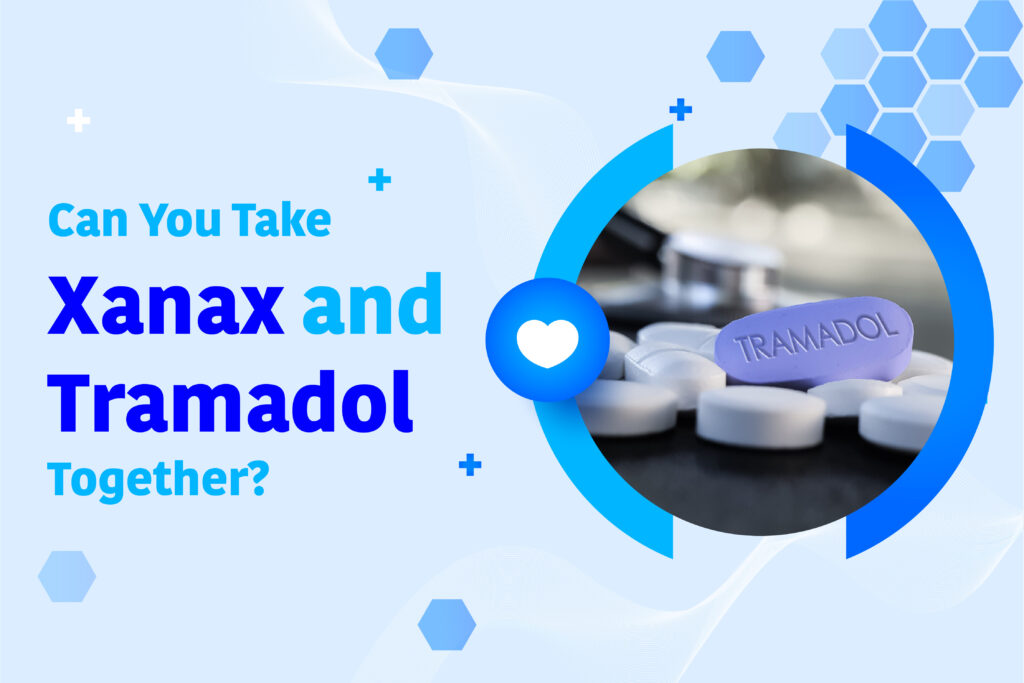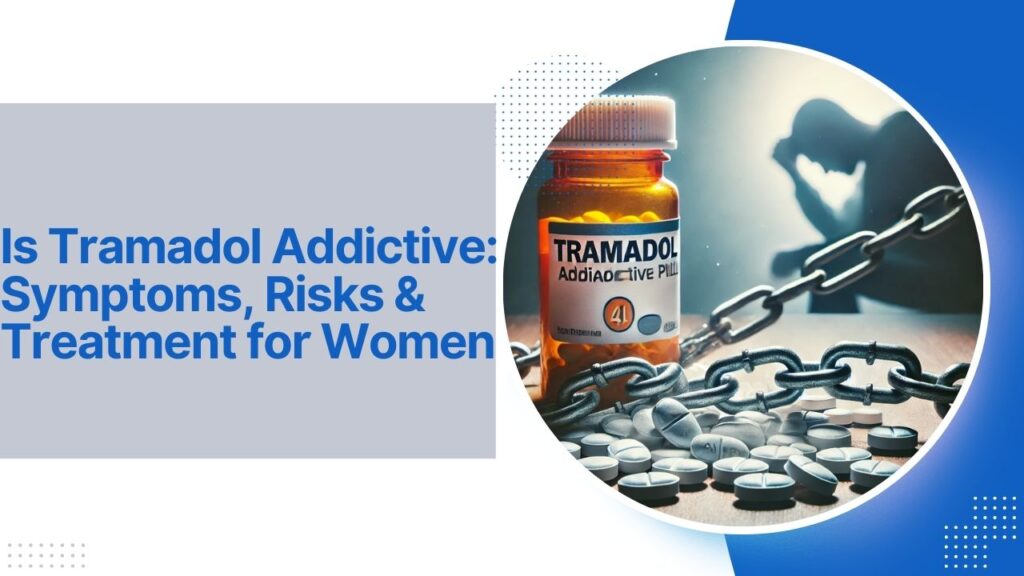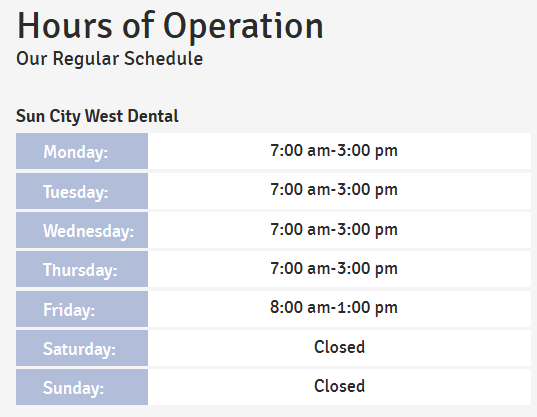Can Dehydration Cause Anxiety?

Have you ever felt anxious for no clear reason? It might surprise you to learn that dehydration could be playing a role. Staying hydrated is not just important for your body—it also affects your mood and mental health. In this article, we’ll explore how dehydration can lead to anxiety, how your body reacts when it lacks water, and simple ways to stay hydrated and feel better. How Dehydration and Anxiety Are Connected How Your Body Reacts When you don’t drink enough water, your body struggles to function properly. This can lead to symptoms like a fast heartbeat, dizziness, and even headaches—symptoms that feel very similar to anxiety. When your body feels stressed due to dehydration, your brain may interpret it as anxiety, making you feel even more uneasy. Hormonal Imbalance Water helps regulate hormones, including cortisol, also known as the “stress hormone.” When you’re dehydrated, cortisol levels can rise, making you feel more anxious and restless. Dehydration can also affect serotonin, a hormone that helps keep your mood stable. Without enough serotonin, you might feel irritable, nervous, or down. Brain Function and Focus Even mild dehydration can make it harder to focus, remember things, or make decisions. Feeling confused or mentally foggy can add to feelings of stress and worry, making anxiety worse. How Dehydration Affects Your Body Increased Heart Rate and Blood Pressure When you don’t have enough water in your system, your heart has to work harder to pump blood. This can make your heart beat faster and cause dizziness, making you feel panicked. Headaches and Fatigue Your brain needs water to function properly. Without enough hydration, it can shrink slightly, leading to headaches and tiredness. These symptoms can make you feel even more stressed or irritable. Mood Swings Dehydration can lead to mood changes, making you feel more anxious, restless, or even depressed. Sometimes, simply drinking water can help improve your mood. Digestive Issues Lack of water can cause stomach problems like constipation and nausea. For people who already experience anxiety, these physical symptoms can make their worries even worse. Note – Xanax is a medication used worldwide to treat anxiety under a doctor’s guidance. It helps manage symptoms by calming the nervous system. Signs of Dehydration That Can Trigger Anxiety Understanding the signs of dehydration can help you take action before it worsens anxiety. Here are some common symptoms: How to Stay Hydrated and Reduce Anxiety Drink Water Regularly Make drinking water a habit. Aim for 8-10 glasses of water a day, but adjust based on your activity level and climate. Carry a reusable water bottle to remind yourself to drink throughout the day. Eat Hydrating Foods You don’t just have to drink water—some foods also help keep you hydrated. Eat water-rich foods like: Limit Caffeine and Alcohol Drinks like coffee, tea, and alcohol can dehydrate you. If you consume these, try to balance them out with extra water. Pair Hydration with Relaxation Techniques Try deep breathing or mindfulness exercises while sipping water. This can help calm your nervous system and reduce anxiety. Track Your Water Intake If you often forget to drink water, set reminders on your phone or use a hydration app. A simple habit tracker can help you see if drinking more water improves your mood. Can You Take Xanax and Tramadol Together? Taking Xanax and Tramadol together can be risky and is generally not recommended without a doctor’s supervision. Both medications depress the central nervous system, which can lead to severe side effects like drowsiness, dizziness, difficulty breathing, and even overdose. Combining them may also increase the risk of dependency and withdrawal symptoms. If you are prescribed both, consult your doctor to ensure safe usage and discuss possible alternatives. Never mix these medications without medical guidance. When to Seek Medical Help While mild dehydration is easy to fix by drinking water, severe dehydration needs medical attention. See a doctor if you experience: If dehydration-related anxiety happens frequently, talk to a healthcare provider to rule out any underlying health conditions. FAQ Can dehydration cause anxiety? Yes! Dehydration can trigger symptoms like rapid heartbeat, dizziness, and mental fog, which can feel like anxiety. It also affects hormones like cortisol, which can increase stress levels. How much water should I drink to prevent anxiety? Aim for at least 8 glasses (64 ounces) of water a day. However, your needs may vary based on your activity level and climate. A good rule of thumb is to drink enough water so that your urine is light yellow. Can dehydration affect my mood? Yes. Dehydration can make you feel irritable, tired, and less focused, which can contribute to anxiety and stress. What are other ways to stay hydrated? Besides drinking water, you can eat hydrating foods, drink herbal teas, and avoid excessive caffeine and alcohol. Conclusion Dehydration can have a surprising effect on your mental health. If you’ve been feeling anxious, tired, or irritable, drinking more water might help. Make hydration a daily habit, pay attention to your body’s signals, and balance your fluid intake with a healthy diet. While drinking water won’t cure anxiety disorders, it’s a simple and effective way to support both your physical and mental well-being. Stay hydrated, and give your mind and body the care they deserve!
Can You Take Xanax and Tramadol Together?

Xanax and Tramadol are two of the most commonly prescribed medications in the United States. It has a boxed warning from the FDA, which alerts doctors and patients to the risk of dependence and addiction. Both are powerful drugs that can help with various conditions. However, the drugs can be dangerous if used together. Taking Xanax and tramadol together can have deadly effects, including extreme sedation and unresponsiveness, severe respiratory depression, coma, and death. Taking Xanax and Tramadol together can cause a number of negative side effects, including drowsiness, depressed respiration, constipation, and nausea. To prevent these side effects, it is important to consult with a healthcare professional before starting to take the drugs. Before diving into the risks of combining these medications, it’s important to understand what each drug does and how they work. In this article, we’ll explore whether it’s safe to take Xanax and Tramadol together, the potential risks, and what you need to know to stay safe. What is Xanax (Alprazolam)? Xanax is the brand name for alprazolam, which is a type of benzodiazepine (benzo) medication that’s often prescribed to treat anxiety and panic disorder. Like other benzos, Xanax works by attaching to and blocking the action of an inhibitory neurotransmitter in the brain called gamma-aminobutyric acid (GABA). As a result, it reduces anxiety and promotes drowsiness and feelings of calmness and euphoria. What is Tramadol ( Ultram) ? Tramadol is an opioid-like medication used to treat moderate to severe pain. It works by binding to opioid receptors in the brain and altering the way the body perceives and responds to pain. Tramadol also has mild effects on serotonin and norepinephrine, which can contribute to its pain-relieving properties. Both Xanax and Tramadol are central nervous system (CNS) depressants, meaning they slow down brain activity and produce calming or sedative effects. While they can be highly effective when used as prescribed, combining them can lead to serious and potentially life-threatening complications. Can You Take Xanax and Tramadol Together? It’s not recommended to take Xanax and Tramadol together without medical supervision. Both drugs depress the CNS, and combining them can amplify their effects, leading to dangerous side effects. Here’s why: Increased Sedation and Drowsiness: Both Xanax and Tramadol can cause drowsiness on their own. When taken together, this effect is magnified, which can impair your ability to function normally. Tasks like driving or operating heavy machinery become extremely risky. Respiratory Depression: One of the most serious risks of combining these drugs is respiratory depression, or slowed breathing. This occurs because both medications suppress the part of the brain that controls breathing. In severe cases, respiratory depression can lead to coma or death. Risk of Overdose: Taking too much of a drug can result in overdose, which can be life-threatening. Overdose symptoms can include extreme drowsiness, trouble breathing, blurred vision, a loss of coordination and confusion, and depression. If these symptoms occur, you should call 911 immediately. You should also call 911 if someone is unconscious, making gurgling noises or is not able to be awakened. Overdoses can cause breathing and heart problems, which can lead to organ failure, a coma or even death. Enhanced Side Effects: Both medications have their own set of side effects, which can become more pronounced when combined. These may include dizziness, confusion, difficulty concentrating, and impaired coordination. What Are the Risks of Mixing Xanax and Tramadol? The risks of combining Xanax and Tramadol are significant and should not be taken lightly. Here’s a closer look at the potential dangers: 1. Central Nervous System Depression As mentioned earlier, both Xanax and Tramadol slow down brain activity. When taken together, this effect is intensified, leading to excessive sedation, slowed reflexes, and impaired cognitive function. This can make it difficult to perform everyday tasks and increase the risk of accidents. 2. Respiratory Issues Respiratory depression is a major concern when combining these drugs. Slowed or shallow breathing can reduce oxygen levels in the blood, leading to hypoxia (oxygen deprivation). This can cause organ damage, brain injury, or even death if not addressed promptly. 3. Increased Risk of Addiction and Dependence Both Xanax and Tramadol have the potential for abuse and dependence. Combining them increases this risk, as the pleasurable effects of the drugs may be enhanced. Over time, this can lead to Xanax Dependency and addiction, making it difficult to stop using the medications without professional help. 4. Serotonin Syndrome (Rare but Serious) Although rare, combining Tramadol (which affects serotonin levels) with other medications that influence serotonin can lead to serotonin syndrome. This condition is characterized by symptoms such as agitation, confusion, rapid heart rate, high blood pressure, and muscle rigidity. While Xanax itself does not directly affect serotonin, the combination with Tramadol could still pose a risk in certain cases. In addition to Get Xanax Alprazolam, combining tramadol with other drugs may increase the risk of serious health complications, including toxicity and overdose. Taking multiple depressants simultaneously floods the body with chemicals it cannot process and eliminate quickly. Moreover, benzos can amplify the strength of opioids like tramadol and increase the risk of a fatal overdose or long-term abuse in cases of misuse or recreational use. What Do Medical Professionals Say? Medical professionals strongly advise against combining Xanax and Tramadol without explicit guidance from a healthcare provider. The U.S. Food and Drug Administration (FDA) and other health organizations have issued warnings about the dangers of mixing CNS depressants, including benzodiazepines like Xanax and opioids like Tramadol. If your doctor prescribes both medications, they will carefully monitor your dosage and overall health to minimize risks. Never adjust your dosage or take these medications together without consulting your doctor first. Never buy Tramadol without a prescription because it is highly addictive and dangerous for health. It is not safe to use without medical supervision and should only be taken if prescribed by a doctor for serious conditions. Special Considerations Certain factors can increase the risks of combining Xanax and Tramadol. These include: Age: Older adults may
Is Tramadol Addictive?

Tramadol is a medication widely used to manage pain, ranging from moderate to severe. It’s known for its effectiveness in providing relief, making it a common prescription by doctors. However, while Tramadol is helpful for many, it carries a significant risk of addiction. For women, understanding the risks associated with Tramadol and knowing how to seek help is crucial. In this article, we’ll answer the question, “Is Tramadol addictive?” and examine its causes, symptoms, and unique effects on women. What Is Tramadol? Tramadol is a prescription pain medication classified as an opioid analgesic. It works by changing how the brain perceives pain, offering relief to individuals experiencing chronic or acute discomfort. While Tramadol is often considered less potent than other opioids, it still poses a high risk of dependence, especially with prolonged or improper use. How Addictive Is Tramadol? Tramadol has addictive properties due to its dual action. It not only affects opioid receptors but also increases serotonin and norepinephrine levels, creating a sense of relief and well-being. Over time, your brain may begin to depend on Tramadol to function normally. Compared to stronger opioids, Tramadol’s effects may appear mild, but this can lead to complacency, making misuse more likely. Dependence can develop rapidly, and withdrawal symptoms can make quitting challenging. So, is Tramadol addictive? Absolutely, and recognizing the signs early is vital. Due to the addicted properties of tramadol, it is illegal in the USA.-never buy tramadol online without a doctor’s prescription. What Causes Tramadol Addiction? There’s no doubt that the answer to the question, “Is Tramadol addictive?” is yes. But why? Addiction to Tramadol can arise for several reasons. Symptoms of Tramadol Addiction Recognizing the signs of Tramadol addiction is critical for seeking help. Here are common symptoms to watch for: Effects of Tramadol Addiction on Women Women often experience unique challenges related to Tramadol addiction, making tailored support essential. Overcoming Tramadol Addiction At Casa Capri Recovery, we guide women through a comprehensive healing process to overcome Tramadol addiction. Supporting a Family Member with Addiction Challenges Start by challenging any misconceptions about addiction. Substance use alters brain chemistry and structure, making quitting difficult. Educate yourself on the risks, side effects, and signs of intoxication or overdose. Research treatment options to present to your loved one. Approach the topic thoughtfully. While interventions can sometimes inspire change, they might also lead to negative emotions like shame or anger. A low-pressure, empathetic conversation may be more effective. If your loved one denies the issue or refuses help, explore support groups or additional resources to guide your next steps. Conclusion Tramadol can be an effective pain reliever when used correctly, but its addictive potential should not be underestimated. Women, in particular, should be mindful of the risks and seek support if they notice signs of dependence. With the right treatment and support, recovery from Tramadol addiction is possible, leading to a healthier and more fulfilling life. Is Tramadol addicting? Yes, Tramadol is highly addicting. It can alter how your brain processes pain, making it easy to develop a dependency. If you notice yourself relying on Tramadol more than prescribed, it’s time to seek help. How can I tell if I’m addicted to Tramadol? Do you feel you need higher doses to relieve pain? Do you experience withdrawal symptoms like anxiety or irritability without it? These are signs of addiction. Why are women more vulnerable to Tramadol addiction? Women often juggle multiple roles, leading to high stress levels. Tramadol can feel like a quick fix for both physical and emotional pain, but women’s bodies may develop dependence more quickly. Can Tramadol addiction affect my relationships? Yes. Addiction can cause emotional distance and damage trust with loved ones. Addressing the issue early can prevent further strain. What are the physical risks of abusing Tramadol? Long-term misuse can cause drowsiness, constipation, and dependence. Over time, these risks can significantly affect your health and quality of life. How can I get help for Tramadol addiction? At Casa Capri Recovery, we offer a supportive, women-focused environment with detox, therapy, and holistic care. Recovery is possible, and we’re here to guide you every step of the way.
How to Manage Xanax Dependency? – [ Explore Now ]

Xanax helps people who deal with anxiety and panic disorders. It soothes the mind and aids those who face overwhelming worry. When doctors prescribe it, Xanax proves useful. However, taking too much or using it for a long time can make you dependent on it. When someone becomes dependent on Xanax, their body begins to need the drug to function normally. This dependence can cause bigger issues like addiction, health problems, and trouble in everyday life. The upside is that you can treat Xanax dependence, and recovery is within reach. This guide will explain the signs, treatment choices, and steps to get better in simple terms that everyone can grasp. What is Xanax Dependency? Xanax, a prescription drug, belongs to a group of medicines called benzodiazepines. It has a calming effect on brain activity helping people relax. However, using or taking more than prescribed can lead the body to start to depend on it to feel normal. Dependency occurs when your body and brain need Xanax to operate. Stopping it might make you feel ill or uneasy. It becomes a cycle where your body craves the drug just to get through each day. Why is Xanax Addictive? Xanax affects the brain by boosting a chemical called GABA, which soothes the nervous system. This calming effect makes it valuable for treating anxiety and panic attacks. Yet, with regular use, the brain starts to depend on Xanax to create this calming sensation. Overtime: This makes Xanax highly addictive for some people, especially those who take it without proper medical supervision. Signs of Xanax Dependency It’s important to recognize the signs of dependency early so that help can be sought. These signs can be physical, emotional, or behavioral. Physical Signs Behavioral Signs Emotional and Mental Signs Obtaining Xanax through dangerous methods, such as unregulated online sources, can lead to counterfeit pills and severe health risks. Always consult a licensed healthcare provider for safe and legal access. If you notice these signs in yourself or someone you care about, it’s important to take action. Dependency only gets worse over time without help. The Risks of Xanax Dependency Xanax dependency can cause a lot of harm to a person’s body, mind, and relationships. Here are some of the risks: Short-Term Risks: Long-Term Risks: The earlier dependency is treated, the easier recovery becomes. Delaying treatment makes these risks even more serious. Treatment Options for Xanax Dependency Treatment Options for Xanax Addiction People can achieve long-term recovery from Xanax addiction through effective treatment programs, despite the challenges involved. These programs focus on the physical and mental aspects of addiction. A -supervised detox helps manage physical dependency, while inpatient or outpatient programs address the mental components. Medically-Managed Detox Managed Detox Detox plays a crucial role as the first step to handle withdrawal symptoms . Using Xanax for a long time creates a chemical dependency, and quitting can result in severe symptoms, including seizures. Health professionals keep an eye on individuals throughout the detox process giving them anticonvulsants and other anti-anxiety medications when necessary. Treatment After Detox Detox under medical care happens in a hospital keeping patients safe, watching their health, and stopping relapses during withdrawal. Treatment After Detox After detox ends, treatment moves to tackle what caused the addiction. Cognitive Behavioral Therapy (CBT) works well. Therapists help people spot bad thinking habits and learn healthier ways to cope. Along with CBT, programs have one-on-one, group, and family sessions. Family therapy aims to fix relationships and build better ways to talk. Finding the Right Program Your success depends on choosing the right treatment program. You’ll stay more involved and have better recovery results if you find a program that fits your needs, whether you like holistic, non-religious, or religious options. If you can, go see the facility before you start. Check out the place, the people who work there, and how clean it is. Talk to the staff to learn about how they treat people, what the program is like, and what help they offer after you finish. This support is key when you’re feeling weak after recovery. Steps for a Successful Recovery Recovery is a journey that takes time, but every step counts. Here are some steps to help you or a loved one succeed: To beat Xanax addiction, you need a full treatment plan. Stopping all at once can kill you so you must detox under medical care to stay safe and comfortable. After detox, you should join a live-in program for 30 to 90 days. This teaches you ways to stay sober for good. If you’re set to move forward, call our trained team to explore your treatment choices. FAQs: Managing Xanax Dependency Q1: What should I do if I think I’m dependent on Xanax? Speak to a doctor as soon as possible. They can help you create a safe plan to reduce your use and start recovery. Q2: Is it safe to stop Xanax suddenly? No, stopping suddenly can cause dangerous withdrawal symptoms. Always consult a doctor to taper off safely. Q3: How long does withdrawal from Xanax last? Withdrawal can last for days to weeks, depending on how long you’ve been using Xanax. Doctors can help manage the symptoms. Q4: Can therapy really help with Xanax dependency? Yes, therapy can help you understand your dependency, manage cravings, and build healthier coping skills. Q5: Is recovery from Xanax dependency possible? Absolutely. With the right treatment and support, many people recover fully and live happy, healthy lives. Conclusion Dealing with a Xanax dependency can seem like a huge challenge, but you’re not on your own. Getting better is possible if you have doctors, therapists, and people who care about you to help. The key is to speak up and do something about it. You deserve to live without depending on anything, and if you’re patient and have support, you can make it happen. Keep in mind that each time you move forward, you’re heading towards a better, more joyful tomorrow. Sources https://www.webmd.com/drugs/2/drug-9824/xanax-oral/details https://www.drugs.com/xanax.htmlhttps://fortworthmillerdental.com/xanax-alprazolam/

